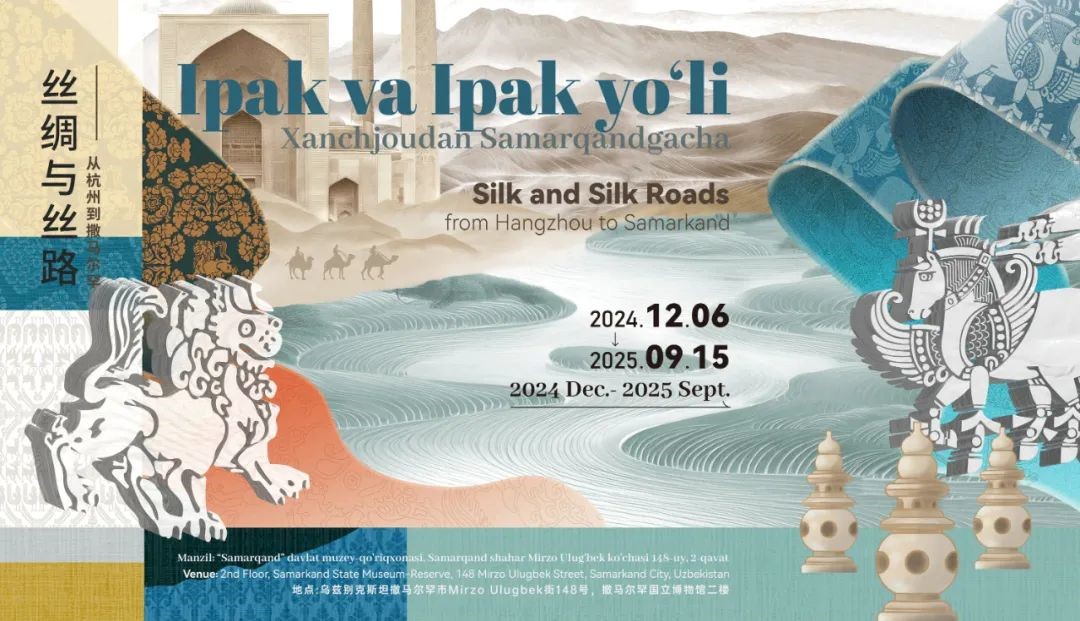
On December 6, the China National Silk Museum and Samarkand State Museum-Reserve in Uzbekistan jointly launched the exhibition Silk and Silk Roads: from Hangzhou to Samarkand at the Samarkand State Museum-Reserve.
This marks the third year of the Silk and Silk Roads: from Hangzhou to Samarkand exhibition series. Focusing on the Tang dynasty (618–907 CE) silk art, this year’s exhibition explores the profound artistic and cultural ties between China and Uzbekistan, showcasing the splendor and enduring legacy of Silk Road civilizations.
The exhibition is organized into four thematic sections: “A Tribute to the Silk Road", "Tang-Style Embroidery Designs", "Rebirth of Elegance" and "Contemporary Fashion". Through restored costumes, innovative designs and interactive performances, it presents the deep historical roots and unique modern allure of Chinese silk art. It also highlights the enduring friendship between the two nations and the artistic value of silk culture.
Samarkand, historically known in China as the state of Kangguo, played a vital role in the Silk Road trade during the Tang Dynasty under Emperor Gaozong (649–683 CE), witnessing countless stories of cultural exchange between East and West. The exhibition highlights two precious artifacts from the China National Silk Museum: a samite with a winged horse motif and a samite with floral medallions and confronted lions. These artifacts not only exemplify the advanced craftsmanship of Tang-era silk weaving but also vividly reflect the cultural integration along the ancient Silk Roads. As a source of inspiration for contemporary design, they beautifully illustrate the harmony between preserving cultural heritage and fostering artistic innovation.
The exhibition is open until September 15, 2025.
Source: China National Silk Museum 